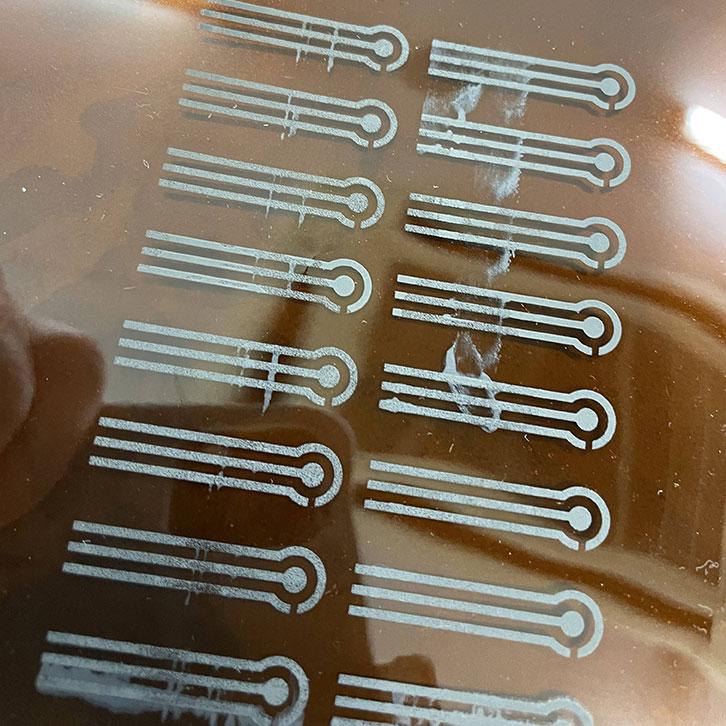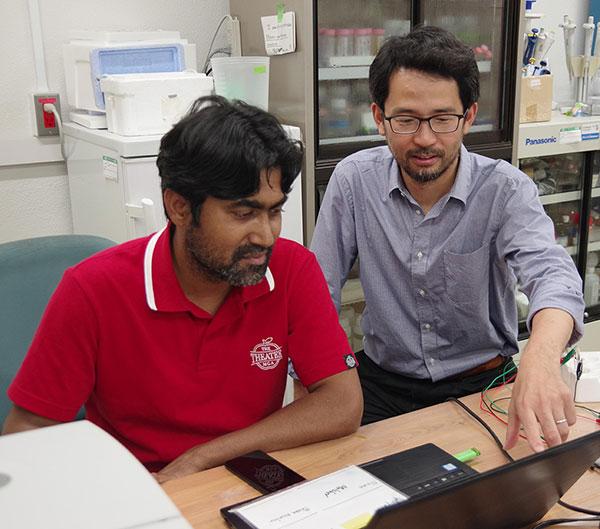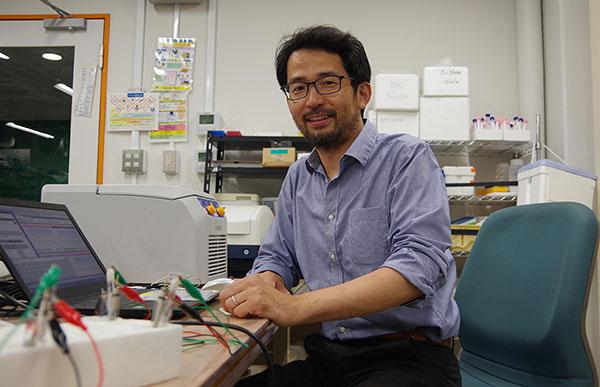TSUKUBA FUTURE
#123 Contributing to a Sustainable Society by Integrating Biotechnology and Electronics
Associate Professor TSUJIMURA Seiya, Institute of Pure and Applied Sciences

Humans derive energy from the food they consume. However, how? The answer lies in oxidation and reduction. The primary nutrients found in food are carbohydrates, proteins, and fats. All of these are organic substances comprising linked carbon atoms. When digestive enzymes break down these organic molecules, oxidizing enzymes extract electrons from them. These electrons are subsequently accepted by the oxygen we inhale, ultimately leading to the formation of water and carbon dioxide. Through this process, the chemical energy from food is transformed into biological energy.
The chemical reaction that loses electrons is termed "oxidation," while the one that gains electrons is "reduction." In essence, the energy we use for daily activities is sourced from the oxidation-reduction reactions that transpire within our bodies.
TSUJIMURA is a prominent figure in bioelectrochemistry. His primary objective is to decode the roles of enzymes responsible for redox reactions in living beings, spanning atomic to cellular levels. His epiphany came during his junior year in the Faculty of Agriculture when he learned that electron and ion transfers can elucidate reactions within living organisms. This realization shifted his interest toward biotechnology. Today, his focus lies in the research and development of "biofuel cells" devices that produce electricity by leveraging redox reactions in living beings, and "biosensors" instruments that measure various biomarkers.

Biofuel cell sensor printed on plastic film (Figure: by courtesy of Associate Professor TSUJIMURA)
Using the carbohydrate glucose as an example helps clarify this process. The anode is coated with an oxidizing enzyme, which facilitates the breakdown of glucose. During this breakdown, electrons and hydrogen ions are released. Conversely, another enzyme, known as oxygen reductase, is applied to the cathode. This promotes the binding of the released electrons and hydrogen ions with atmospheric oxygen, resulting in water formation. The anode and cathode are linked with a conducting wire, ensuring electron flow between them. This mechanism mirrors that of hydrogen fuel cells found in fuel cell vehicles and household units, with the primary difference being the substitution of organic fuel with hydrogen and the enzyme with a metal catalyst.
In April 2023, TSUJIMURA and his team introduced a disposable chip sensor, no bigger than a fingertip, rooted in biofuel cell technology to effortlessly measure blood glucose levels. There is an enzyme-coated electrode on the chip's surface. When a drop of blood is applied, electricity is generated using the glucose present in the blood as fuel. This produces an electric current. Given that the current's magnitude directly corresponds to the blood glucose level, one can ascertain glucose concentrations by reading this current.
Self-monitoring of blood glucose is vital in diabetes management, ensuring optimal blood glucose control. Typically, measuring blood glucose necessitates a separate device that provides electric power to the chip. In contrast, TSUJIMURA's chip acts as its own battery, eliminating the need for an external device to instigate the chip's electrochemical reactions. If smartphones can read the chip through its electrochemical reactions, this innovation could significantly reduce costs.
TSUJIMURA said, "If blood glucose levels can be measured easily and accurately anytime, anywhere, it will lead to early detection and treatment of diabetes. This method can also be used to measure other substances in the blood."

Associate Professor TSUJIMURA instructing an international student
In a collaborative effort with Associate Professor SHITANDA Isao from Tokyo University of Science, TSUJIMURA has also pioneered a biofuel cell capable of generating electricity using lactate found in sweat and sugar present in urine as fuel sources. Much like the blood glucose chip, this is foreseen as a sensor in its current design phase. For both lactate and urinary sugar, a carbon electrode is imprinted onto a paper. When enzymes suited for fuel oxidation or oxygen reduction are applied, these sheets become biofuel cells. These paper batteries can be adjusted for voltage and current by linking them in parallel or series, and they maintain flexibility, allowing bending.
The biofuel cells designed for detecting urinary glucose, similar to the ones for blood glucose, hold promise for early diabetes detection. Additionally, TSUJIMURA and SHITANDA have crafted a device that merges a biofuel cell with a wireless transmitter for urinary glucose detection. Upon detecting urinary glucose, the biofuel cell initiates electricity generation, which the wireless transmitter utilizes to emit a radio wave. If integrated into diapers, this device can remotely monitor urinary sugar levels, aiding in timely diaper changes.
Sweat is a complex fluid containing electrolytes, metal ions, and metabolites. One such metabolite is lactate, produced during intense physical activities. By attaching a biofuel cell designed for lactate to the body, we can monitor variations in lactate levels within sweat. These fluctuations in generated electricity can provide valuable insights for managing exercise intensity for athletes and workload for construction workers.

Associate Professor TSUJIMURA Seiya. He always tells his students, "Cultivate your imagination."
While the current energy yield stands at approximately 1 mW, using glucose as fuel holds the potential to develop a lightweight, long-lasting battery. This battery's energy density could theoretically surpass that of contemporary lithium-ion batteries. Notably, these reactions transpire at room temperature, under standard atmospheric pressure, and at neutral pH. Contrasting traditional fuel cells, there's no necessity for precious metals or other catalysts.
TSUJIMURA reflects on the century-old concept of harnessing biological reactions for energy generation. He comments, "The idea of mimicking biological reactions to produce energy is not new, but its tangible application has remained stagnant. Our goal is to elucidate their operational principles and pioneer new materials that optimize enzyme performance."
Article by Science Communicator at the Bureau of Public Relations
PREVIOUS
#122 Pay It Forward


